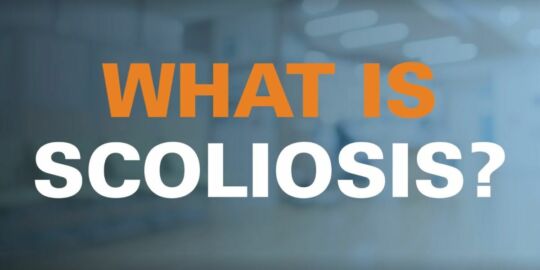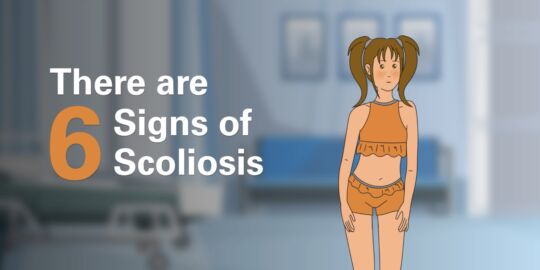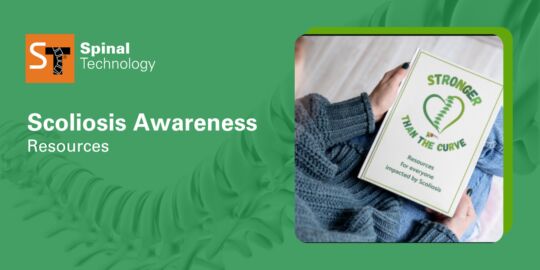A Parent's Guide to Understanding Scoliosis
Letter To Parents And Caregivers
At Spinal Technology, we understand that a scoliosis diagnosis for your child can be overwhelming. Rest assured, it’s natural to feel worried. Many hours of online research or talking to your medical provider can be like drinking from a firehose. You want the best options for your child and don’t know where to begin.
As a trusted leader in the orthotics and prosthetics industry, Spinal Technology is known as the Scoliosis Specialist. Since 1991, Spinal Technology has been fabricating custom spinal orthoses to improve patients' lives. We are the global leader specializing in custom options to help many spinal conditions.
We are the exclusive manufacturer of the Providence Nocturnal Scoliosis® Orthosis, and we also fabricate a number of full-time scoliosis brace styles. Medical experts around the world depend on our expertise for the assessment of patient curvature, the blueprinting of x-rays, the design of each orthosis, and the x-ray evaluation of patients in-brace.
At Spinal Technology, we believe that sharing our knowledge and absorbing that of others is the most effective way to advance the treatment and care of all patients. We have created a comprehensive guide for parents and caregivers to start at the beginning of what scoliosis means and end up with resources for your family that can help guide you through this scoliosis journey.
Download a Parent's Guide
Download a printable guide to Adolescent Idiopathic Scoliosis for parents and caregivers.
Understanding Adolescent Idiopathic Scoliosis (AIS)
As a parent, learning that your child has scoliosis can feel overwhelming. Adolescent idiopathic scoliosis (AIS) is a condition where the spine develops a curve, most commonly between ages 10 and 18. While this can be concerning, early detection and the right treatment plan can help your child manage their scoliosis effectively. You are not alone—many families face this diagnosis with the guidance of medical professionals and proven treatment options.
How is Scoliosis Diagnosed?
AIS is often first noticed during routine scoliosis screening, which is typically conducted at schools or during regular checkups. One of the most common ways to assess spinal curvature is through the Adams Forward Bend Test.
- During this simple test, your child will be asked to stand with their feet together, place their hands in front of them, and slowly bend forward at the waist while keeping their knees straight.
- This allows the provider to observe the back for any signs of unevenness in the shoulders, ribs, or hips, which could indicate scoliosis.
- According to Boston Children’s Hospital (2020), one key indicator is a raised “rib hump” on one side of the back, suggesting that the spine may be curving abnormally.
- If any signs of scoliosis are found, your doctor may recommend an X-ray to get a clearer picture of your child’s spine.
- The X-ray will measure the curvature’s degree using the Cobb angle—a key factor in determining whether scoliosis is present and how best to manage it. Generally, a curve more significant than 5–7 degrees is considered scoliosis.
What Happens After a Scoliosis Screening?
- If scoliosis is suspected, your child’s doctor will take a complete medical history, including asking about any family history of scoliosis. They will also conduct a physical examination to better understand how the spine is curving and assess any impact on posture or movement.
- A spinal X-ray (radiograph) will provide a more detailed look at the shape and direction of the curve. Scoliosis can develop in different parts of the spine—including the thoracic (upper back), lumbar (lower back), or cervical (neck) regions—and may curve in a “C” or “S” shape. These details help doctors determine the best course for your child’s treatment.
- At Spinal Technology, we understand that scoliosis can feel overwhelming for parents and children alike. However, early detection and the proper treatment can make a significant difference. Working closely with your child’s medical team makes you feel confident in finding a solution supporting their spinal health and overall well-being.
What is AIS?
Adolescent idiopathic scoliosis (AIS) is the most common type of scoliosis, accounting for 80% of cases. It occurs when the spine curves sideways and rotates. While the exact cause is unknown, it often progresses rapidly during growth spurts. The goal of treatment is to monitor or slow the progression of the curve, ensuring the best possible outcome for your child’s spinal health.
Symptoms of AIS
Scoliosis symptoms vary based on the degree of the spinal curve:
- Mild scoliosis (10–25 degrees): This condition often goes unnoticed and is typically found during a school or doctor’s screening.
- Moderate scoliosis (26–40 degrees): This may cause noticeable unevenness in the shoulders, waist, or back and mild discomfort.
- Severe scoliosis (over 40 degrees): This can lead to more visible spinal curvature, rib prominence, and in some cases, breathing difficulties or discomfort.
Early detection allows for more treatment options and may reduce the need for surgery.
Treatment Options for AIS
When it comes to treating adolescent idiopathic scoliosis, every child’s journey is unique. The right approach depends on the severity of the curve, how much your child is still growing, and their overall health.
- Mild cases: If your child has a slight spinal curve, their doctor may recommend regular checkups to monitor any changes as they grow. Many children with mild scoliosis don’t need treatment beyond observation.
- Moderate cases: When the curve is more pronounced, bracing is often the best way to help prevent it from worsening. A well-fitted brace can gently guide the spine while allowing children to stay active and comfortable.
- Severe cases: A doctor may discuss surgical options in some situations, especially when the curve is significant and continues to progress. However, this is only considered when necessary, and bracing is often the first line of defense.
For many families, bracing is an effective and non-invasive way to manage scoliosis. Nighttime bracing has become a preferred option because it provides strong spinal correction while only being worn during sleep. Children can go about their day without the added stress of wearing a brace at school or during activities. Many parents find that nighttime bracing offers peace of mind, knowing their child is getting effective treatment in a way that feels less disruptive to their daily lives.


